The Museum of Turkish and Islamic Arts is Ottoman palace on the western edge of the Hippodrome was built in 1524 for İbrahim Paşa, childhood friend, brother-in-law and grand vizier of Süleyman the Magnificent. It’s now home to a magnificent collection of artefacts, including exquisite examples of calligraphy and a collection of antique carpets that is generally held to be the best in the world.
Turkish and Islamic Arts Museum’s exhibits date from the 8th and 9th centuries up to the 19th century. Highlights include the superb calligraphy exhibits, with müknames (scrolls outlining an imperial decree) featuring the sultan’s tuğra (monogram). Look out for the exquisite Iranian book binding from the Safavid period (1501–1786). And whatever you do, don’t miss the extraordinary collection of carpets displayed in the divanhane (ceremonial hall) it includes Holbein, Lotto, Konya, Uşhak, Iran and Caucasia examples.
The lower floor of the museum houses ethnographic exhibits. Labels are in Turkish and English throughout.
The Museum of Turkish and İslamic Arts contains Turkish and İslamic Arts all together and is known as the last museum to open in the Otoman Period.The foundation of the museum was commissioned as a result of continuous steal of artworks from various trust bulidings, mosques, masjids, takas and sbrines from all over the country.Studies under a commission chaired by the director of Imperial Museum Mr. Osman Hamdi was completed in 1913 and the Museum was opened to publick as “The Museum of Muslim Endowments” (Evkaf-ı İslâmiye Müzesi) in imaret building within the complex of Süleymaniye Mosque, one of the masterworks of Mimar Sinan, the Chief Architect.
Fallowing the promulgation of the Republic the museum was lent the name of The Museum of Turkish and Islamic Arts and was transferred Ibrahim Pahsa Palace in 1983 where it stands today. The Palace that was given to then Grand Vizler Ibrahim Pahsa by Sultan Süleyman the Magnificent was amongst the chief structures of civil architecture in 16thcentury.
Rose on the stages of ex-hippodrome in Horse Square (At Meydanı) the famous historical square of Istanbul, the Palace in contrast to the Ottoman architectural tradition where all structures were built in wood was built in stone. Although it is identified precisely when and by whom the Palace was built, the alterations made before the great circumcision ceremony and the new entrance gate was known to be built by Sinan the Architect.
The Palace functioned as a palace of grand vizier. The just ceremony at the palace was arranged for the celebration of Ibrahim Pahsa’s wedding with Sultan’s sister Hatice Sultan in 1524. Sultan Süleyman the Magnificent watched the circumcision ceremonies of his princes Mustafa, Mehmet and Selim in 1530 from his lodge (mahfil) in Ibrahim Pahsa Palace. The ceremonial hall and the Assembly Hall (Divanhane) of the Palace was refurbished between the years 1966 and 1983 and obtained today’s condition. Various historical sources describe Ibrahim Pahsa Palace the largest amongst viziers’ palaces an even more marvellous than from Topkapı Palace.
While here, be sure to enjoy an expertly prepared Turkish coffee at Müzenin Kahvesi in the courtyard.
| Address | : | At Meydanı Sok. No:46 İbrahim Paşa Sarayı Sultanahmet, Eminönü |
| Web Site | : | www.tiem.gov.tr |
| : | turkislam@muze.gov.tr – turkislameserlerimuz@kultur.gov.tr | |
| Phone | : | (212) 518 18 05 |
| Fax | : | (212) 518 18 07 |
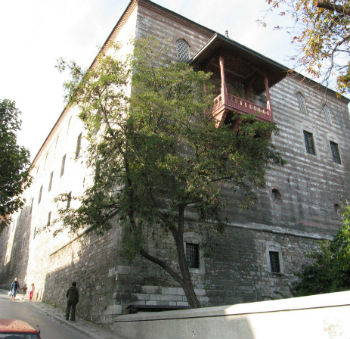
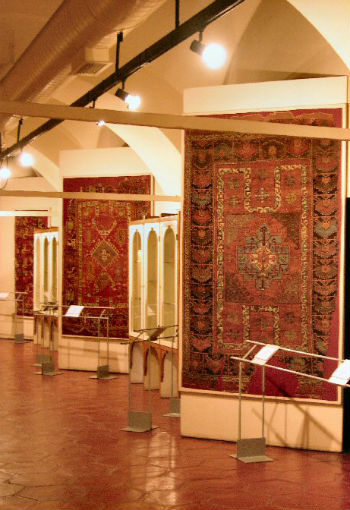
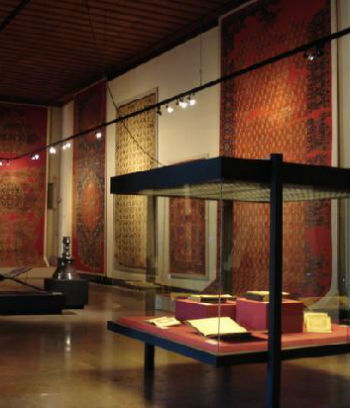
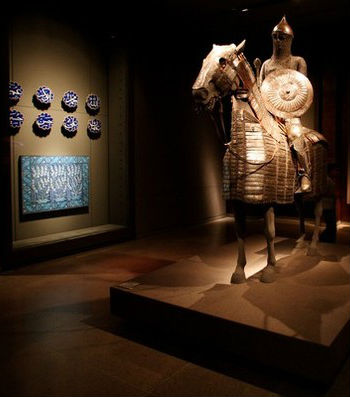
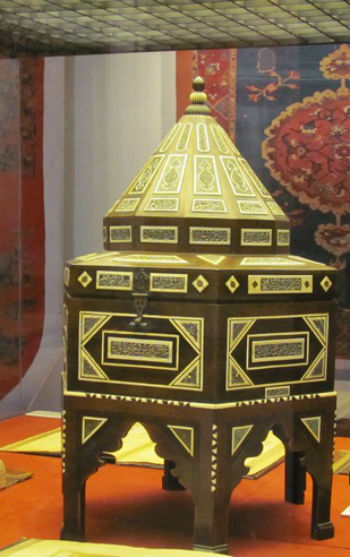


Located right accross from the Blue mosque but very few people visit this nice museum.
The carpets and designs are facinating. The anthropological section good. Lovely cafe with views over the Hippadrome.
Despite being in the middle of the tourist area, this museum is largely overlooked. I've been here many times and have never found it crowded. This is the place to come to see historic carpets, calligraphy, and tile, and to rest and relax in a quiet, pleasant courtyard away from the hustle and bustle of Sultanahmet Square.
As an Istanbuler ,one of my most favourite courtyards in town. Museum and artifacts on display are wonderful and well worth the visit.
Certainly recommendable! You will see the old copies of Qur'an, book-cases, Sultans' orders and proclamations, ancient rugs, ceramics and other pieces of art. It is very impressive and certainly worth the money – the entry is not expensive. Be sure not to miss the ethnography collection.
Having been to the islamic arts museum in Kuala Lumpur, i was expecting something similar. this is pretty small, and mostly filled wiht carpets and rugs.
It was a wonderful place fot those who want to explore Ottoman and Islamic art and daily life objects mainly. There are sections for written handwritten pieces, carpets, wooden objects, tiles, drawings, coins and jewelry and stone art pieces. Besides that, there are also some other exhibitions for some periods.
Breath taking Islamic arts Mueum, words cant describe amazing places! i will cherish this moment for the rest of my life
First, the İbrahim pasa palace where the museum is located was my favorite palace/ architect. İnteresting collection of ottoman daily life objects: home design, bathrooms, windows, clothes, carpets, …. Ottoman empire objects: maps, islamic calligraphy. Alot more. İts a very informative history tour of the Ottoman empire.
This museum has an excellent collection of the different types of arts and crafts throughout Turkey. The carpet room is a very good place to start if looking for a Turkish carpet as well. It explains the meanings and different styles across Turkey very well.